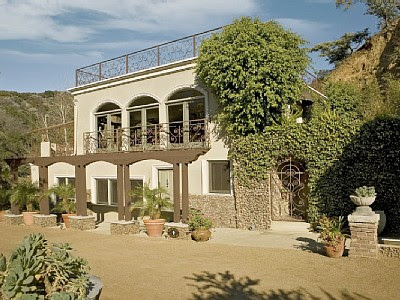
In 1919, Harry Houdini and his wife Bess rented a home in Los Angeles. To practice his underwater escapes, he allegedly installed a large sunken bathtub. This home had a total floor area of 6008 square feet and a living area of 601. Harry Houdini paid $25,000 for the mansion in 1904 that he bought in New York City. From its eerie history to the many mysterious stories associated with it, Home Houdini has remained an enigma for many years. Although there is much speculation as to what lies behind the doors of the house, no one has ever been able to definitively uncover the truth. Home Houdini is rumored to be the final resting place of the world- famous magician and escape artist, Harry Houdini. Located in the town of Wilkes-Barre, Pennsylvania, Home Houdini has been a source of fascination for both locals and visitors alike, as people continue to search for the truth behind the house’s many secrets. The people who made appearances at the lower cabin that was home to silent film star, Tom Mix, and at the upper Tree House that was designed by famed architect Rober Byrd in the 1920's included, John Mayall, the famed GTO's (Girls Together Outrageously), the "Plaster Casters", Jimi Hendrix, The Doors, Love, Janis Joplin, James Taylor, Mick Jagger, Mary-Ann Faithful, Jeff Beck and many others.Home Houdini is the name of a mysterious haunted house that has been the subject of both legend and lore for centuries. Laurel Canyon was the physical focal point of the blues-inspired Psychedlic rock movement, and Frank Zappa's rented cabin at Lookout Mountain and Laurel Canyon Boulevard was the center of Laurel Canyon's crazed rock scene. The 2001 film Laurel Canyon is an homage to this legacy. He eventually moved because every nut in town knew where he lived.” Other rock stars included Jim Morrison, John Mayall, Carole King, The Mamas and The Papas, Dusty Springfield, Brian Wilson, and many others. Frank Zappa's infamous home during the sixties was located on the NW corner of Lookout Mountain and Laurel Canyon, where now is a vacant lot. This is “where Joni Mitchell was living when she wrote "Ladies Of The Canyons" and "Clouds" and, Graham Nash wrote "Our House" when he was living here with her. Laurel Canyon was second only to Haight-Ashbury as a Mecca for Hippies. In a counterpoint to all this modernism and development, the rustic style of turn-of-the-century Laurel Canyon was rediscovered by musicians during the 60’s and 70’s. Laurel Canyon was the BelAir of its day, and many of these actor's English Tudor and Spanish style homes can still be seen in the canyon today. Errol Flynn lived in a huge mansion just north of Houdini's estate.


With the creation of the Hollywood film industry in 1910, the canyon attracted a host of "photoplayers", including Wally Reid, Tom Mix, Clara Bow, Richard Dix, Norman Kerry, Ramon Navarro, Harry Houdini and Bessie Love. Wealthier residents were also attracted to Laurel Canyon. This article was published in a local paper in 1925: "Frank Sanceri, the man who was flogged by the self-styled "white knights" on Lookout Mountain in Hollywood several months ago, was found not guilty yesterday by a jury in Superior Judge Shea's courtroom of having unlawfully attacked Astrea Jolley, aged 11." While there are many references to the bigotry of land developers in our area, it would appear that some residents were also prone to bias and lawlessness. These were thinly veiled attempts to limit ownership to white males of a certain class. This legacy of narrow streets is the reason we have parking and emergency access problems today.Īs was the custom in these days, restrictive covenants were attached to the new parcel deeds. Some of the first tracks to be developed in the Lookout Mountain bowl were Bungalow Land and Wonderland Park, both of which were moderately priced with narrow lots and a network of interconnecting lanes and foot paths. Mann and his partners bought property along Laurel Canyon Boulevard and up in the hills. He retired in 1895 and moved to Hollywood, where he "enjoyed the evening of his days" on his 480-acre estate in Laurel Canyon.Īs mentioned in the Early Canyon History section, the serious development of the canyon was set in motion by Charles Spencer Mann, an engineer and real estate investor. Harper was a Civil War veteran who immigrated to California and made his fortune in the hardware business. Harper, and it dominated the entrance to Laurel Canyon. One of the earliest farming estates was owned by Charles F.

Prior to major development, Laurel Canyon was a secluded valley that supplied water to farms at the base of the canyon and some hillside grazing to sheep ranchers.


 0 kommentar(er)
0 kommentar(er)
